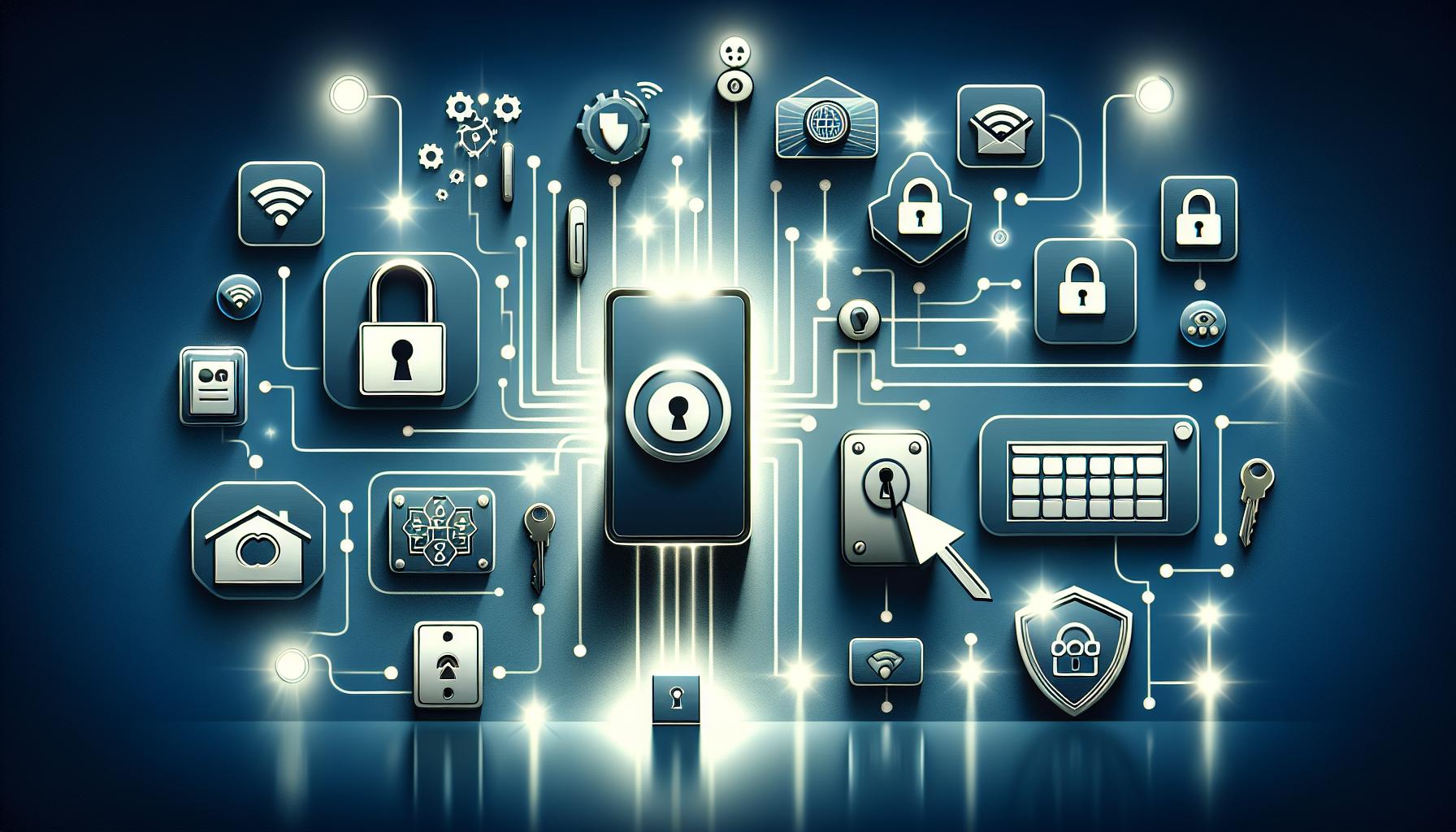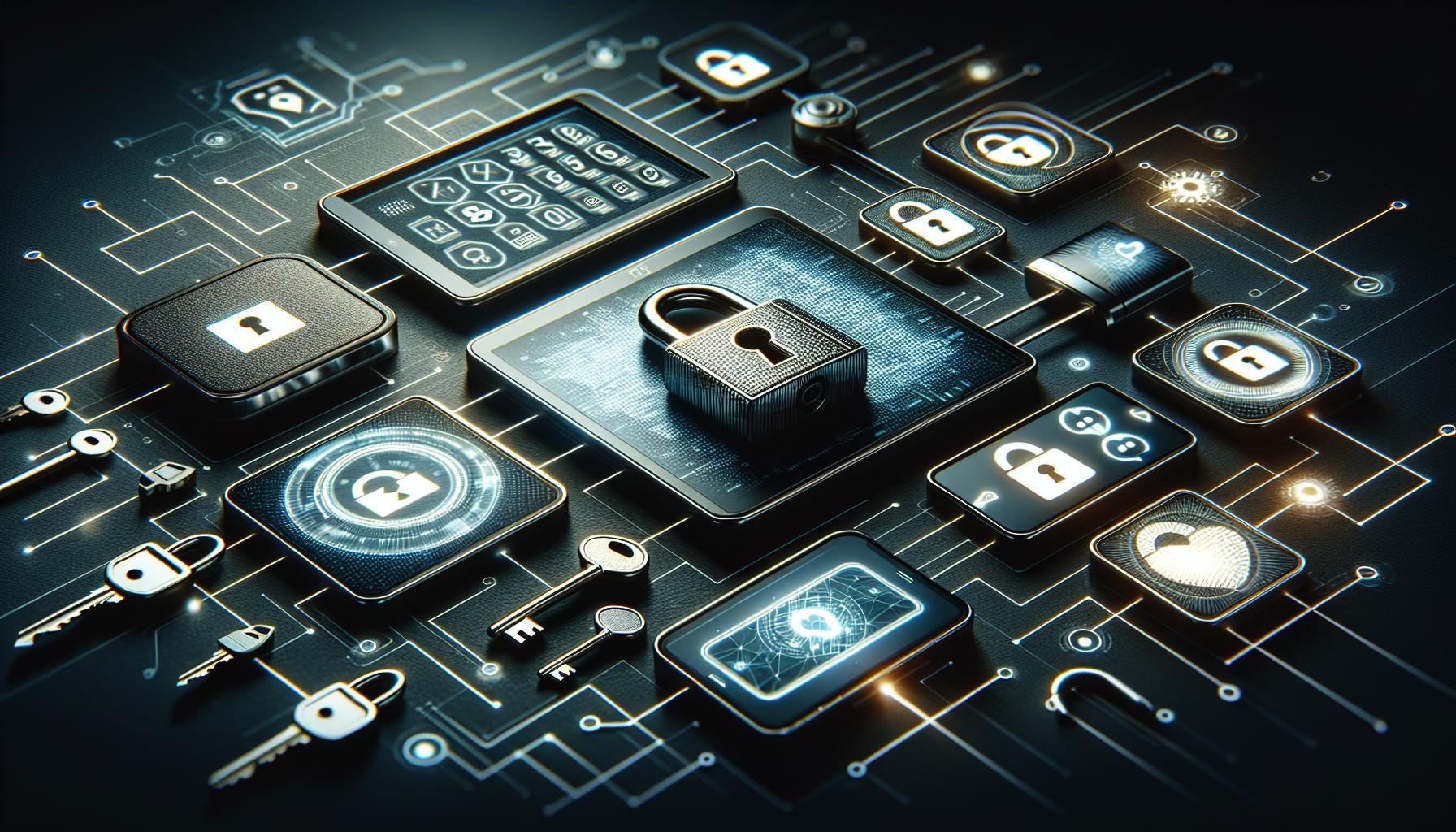Struggling to connect all your devices to the internet? Forgetting your WiFi password can be a frustrating roadblock. In today’s digital age, maintaining seamless connectivity is essential for productivity and entertainment. This guide will help you easily locate and manage WiFi passwords on your PC, ensuring all your devices stay connected effortlessly.
Understanding Your WiFi Password: What It Is and Why It Matters
In an age were seamless connectivity is essential, understanding the role of your WiFi password in protecting your network is vital. The WiFi password serves as a gatekeeper, ensuring that only authorized devices can connect to your home network. Without it, anyone within range could possibly access your internet connection, leading to security breaches, unauthorized usage, and compromised personal data. Therefore,grasping what your WiFi password entails and its significance can empower you to safeguard your digital life.
One of the primary functions of a WiFi password is to secure your network from unauthorized access.When you set up a new connection,your devices like PCs,smartphones,and tablets request this password before establishing a link. It creates a barrier against cyber intruders who might exploit an unprotected network for malicious activities, such as accessing sensitive data or distributing malware. regularly updating your WiFi password is a simple yet effective way to enhance your network security.
Choosing a Strong WiFi Password
To maximize the security your WiFi password provides, consider the following tips for creating a robust password:
- Length Matters: Aim for at least 12-16 characters.
- Use a Mix of Characters: Combine uppercase and lowercase letters, numbers, and special symbols.
- Avoid Common Words: Stay away from easily guessable information,such as names or birthdays.
- Random Combinations: Consider using a password manager to generate and store complex passwords.
By implementing these guidelines, you can significantly enhance the security of your network, making unauthorized access less likely.
Recovering Your WiFi Password
In some cases, you may forget your WiFi password, especially if you have been using automatic connection settings on your PC. Fortunately, there are ways to retrieve it. Users can navigate to their network settings on their devices and view the saved WiFi password,or refer to their router settings if they have administrative access. Here’s how you can typically find it on a Windows PC:
1. Go to Network & Internet Settings.
2. Select Network and Sharing Center.
3.Click on your WiFi network name, and than Wireless Properties.
4. Under the Security tab, you will see a box that says Show characters.Check this box to reveal your password.
Understanding your WiFi password not only helps in maintaining a secure internet surroundings but also ensures easier access for you and other authorized users. By being proactive about your password management, you can connect all your devices effortlessly and securely, enjoying high-speed internet without the fear of unauthorized access.
How to Find Your WiFi Password on a Windows PC
When you’re trying to connect various devices to your home network, knowing your WiFi password is essential. Regrettably, many users forget their passwords or find themselves needing to access it for other devices or setups. Luckily, if you’re using a Windows PC, retrieving your WiFi password is straightforward.Whether you’re setting up a new gadget or troubleshooting connectivity issues, knowing how to find your WiFi password can save you time and frustration.
To discover your WiFi password, start by ensuring you are connected to the network you wish to inquire about. Here’s a simple method to view your WiFi password on Windows 10 or 11:
Steps to Locate Your WiFi Password
- Open Network & Internet Settings:
– Right-click on the network icon in the taskbar.
– Select “Open Network & Internet settings”.
- Access the Network and Sharing Center:
– in the settings window, click on “Network and Sharing Center” or “Status” and then “Network and Sharing Center”.
- View Your NetworkS Status:
– Click on your WiFi network name next to “Connections”.
- Show your Password:
– In the WiFi Status window, click on “Wireless Properties”.
– Navigate to the “Security” tab.
– Check the box labeled “Show characters” to reveal your WiFi password.
By following these steps, you can quickly retrieve your WiFi password and connect all your devices easily without needing to reset your router or go through other complicated steps.If you encounter any issues while trying to reveal your password, ensure that your user account has administrator rights. Different versions of Windows might have slight variations in these settings, but the core process remains quiet similar. This proficiency not only helps connect devices but also empowers you to assist others facing similar challenges in retrieving the WiFi password on their PCs.
Utilizing these methods effectively will enhance your experience and ease the process of connecting your devices to the WiFi network.
Step-by-Step Guide to Connecting Your Devices Seamlessly
Connecting a myriad of devices to your home network should be as effortless as sending a text, yet many encounter hurdles along the way. This guide aims to demystify the process of sharing your WiFi password on a PC, ensuring all your gadgets can connect smoothly and efficiently. Whether it’s your smartphone, tablet, smart TV, or IoT devices, the steps outlined below will make your home network more accessible.
Gather Your Gear
Before diving into the connection process, ensure you have everything you need within arm’s reach:
- Your PC is connected to the internet.
- The devices you wish to connect (laptops, smartphones, tablets, etc.).
- access to the WiFi router if needed for configuration.
- A list of devices you want to connect and their connection capabilities.
Step 1: Find Your WiFi Password
to give access to other devices, you first need to locate your WiFi password on your PC. Here’s how to do it:
- Open Network & Internet settings by right-clicking on the network icon in the system tray.
- Select network & Internet settings.
- Click on Status and then Network and Sharing Center.
- Click on your WiFi connection name.
- In the WiFi Status window, select Wireless Properties.
- Go to the Security tab and check the box that says Show characters to reveal your wifi password.
This crucial step allows you to assist other devices in joining the network without repeated frustration.
Step 2: Connect Your Devices
Now that you have the WiFi password handy, it’s time to connect your additional devices. Here’s a quick overview based on device type:
| Device Type | steps to Connect |
|---|---|
| Smartphone | Go to Settings > WiFi. Select your network and enter the password. |
| Tablet | Navigate to Settings > WiFi. Choose the network and input the password. |
| Smart TV | Access Network Settings in the TV menu, select the network, and enter the password. |
| IoT Devices | Follow prompted setup instructions and input network information as needed. |
Step 3: Verify Connection Status
Once you’ve attempted to connect your devices, confirming that they are connected to the correct network is vital. Here’s what you should look for:
- On each device, ensure the WiFi symbol indicates a stable connection.
- In your PC’s wifi settings, check if other devices successfully appear in the device list.
- If a device cannot connect, double-check that the password is entered correctly and troubleshoot the device’s network settings if necessary.
Following these straightforward steps will simplify the process of sharing your WiFi password on your PC, facilitating easy connections for all your devices. By arming yourself with this knowledge, you’ll transform networking into a hassle-free experience that enhances your digital lifestyle.
Troubleshooting Common Connection Issues with Your WiFi
Experiencing connection issues with your WiFi can be frustrating, especially when you depend on it for daily tasks.Having all your devices communicate seamlessly often hinges on a stable WiFi connection,but various factors may disrupt this harmony. Whether you’re unable to connect your smartphone or your laptop refuses to recognize the network, knowing how to troubleshoot can save you time and hassle.
Common Connection Problems
One of the most prevalent issues is when your WiFi network appears “disabled” or doesn’t automatically connect. This can happen for a variety of reasons, such as power-saving settings or signal interference. To address this, start by ensuring that your device settings are configured correctly. Check that “Keep WiFi on during sleep” is set to “Always,” which prevents your device from disconnecting to save battery. Additionally, disabling WiFi Power Save Mode might help in maintaining a steady connection when you need it most [1].
Device and Network Settings
If you’ve recently modified settings or updated your device, verify the configuration of your network. For example, ensure that the router’s security mode is compatible with your device, as discrepancies may prevent a triumphant connection. For optimal results, common settings like WPA Personal for security and TKIP for the encryption algorithm should be utilized [3]. If issues persist, checking for firmware updates for both your router and device may also resolve unforeseen compatibility problems.
actionable Steps to Restore Connectivity
When faced with persistent connection issues, consider the following steps:
- Restart your router and modem by unplugging them for about 30 seconds.
- Forget the network on your device and reconnect by re-entering the WiFi password, ensuring that it is correct.
- Try connecting using a different device to determine whether the issue is with one specific device or your network.
- If your device fails to detect networks altogether, reset the network settings to default; this can resolve deeper connectivity issues.
Obtaining seamless connectivity often revolves around the WiFi password on PC for easy access across all devices. As you troubleshoot, remember that maintaining a strong password and understanding your network’s settings is vital to ensure smooth and secure connections. If problems continue after exhausting these steps, consulting your ISP for additional support may be the best course of action.
Tips for Securing Your WiFi Network and Password
The security of your WiFi network is crucial in today’s digital landscape, where cyber threats are increasingly elegant and prevalent. With so many devices connecting to the internet, it’s essential to implement measures that protect your data and privacy. By taking small but effective steps to secure your wifi, you’ll not only safeguard your information but also enjoy a seamless experience while connecting all your devices easily.
Strengthen Your Password
Choosing a robust WiFi password is the first line of defense. A strong password should be at least 12-16 characters long and include a mix of uppercase letters, lowercase letters, numbers, and special characters. Avoid using easily guessable information like names or birthdays. Consider passing your password through a password generator tool to ensure it meets strength criteria. For example:
- Use phrases or sentences that are memorable yet complex.
- Incorporate symbols and numbers creatively to enhance complexity.
Change the Default Network Name (SSID)
Many routers come with a default SSID that reveals the brand or model of the device, making it easier for attackers to target your network. Changing your SSID to something unique — preferably unrelated to you or your household — can help obscure your network from prying eyes. Ensure that your new SSID does not contain any personal identifiers, making it harder for potential intruders to gain insight into your network.
Enable WPA3 Encryption
To safeguard your WiFi network further, always enable the most secure encryption protocol. If your router supports it, opt for WPA3 encryption, which provides enhanced security features compared to its predecessors (WPA2 & WEP). If WPA3 is unavailable, at the very least, ensure that WPA2 is activated. This encryption makes it significantly more arduous for unauthorized users to access your network and its resources.
Regularly Update Your Router’s Firmware
Keeping your router’s firmware up-to-date is essential for maintaining a secure network. Manufacturers frequently release updates that patch vulnerabilities and improve performance. To check for updates, log into your router’s control panel — usually accessible through the IP address (commonly 192.168.1.1) — and look for the firmware section.Schedule reminders every few months to perform this check.
| Action | Frequency | Notes |
|---|---|---|
| Change WiFi Password | Every 6 months | Do not use the same password across multiple networks. |
| update Router Firmware | Every 3 months | Regularly check the manufacturer’s website. |
| Review Connected Devices | Monthly | Remove devices that you no longer recognize. |
By implementing these effective tips and maintaining diligence about your WiFi network security, you ensure that connecting all your devices easily doesn’t come with the cost of compromising your data. Keeping a vigilant eye on your network’s state will not only enhance your digital experience but also provide peace of mind.
Managing Multiple Devices: Keeping Connections Organized
Staying connected in our multi-device world can often feel overwhelming, especially when juggling laptops, tablets, smartphones, and smart home devices. One essential step for seamless connectivity across your gadgets is organizing your WiFi connections effectively. The ease with which you can connect all your devices hinges on a properly managed WiFi password on your PC, which serves as the gateway for all other devices in your network.
Understanding Your Network Environment
First and foremost, familiarize yourself with your local network environment. Knowing how many devices are connected will not only help you monitor network performance but also assist in troubleshooting any connectivity issues that arise. A straightforward approach is to conduct a device inventory that lists all your devices along with their unique MAC addresses. This can be done through your router’s settings page, which usually provides a list of connected devices.
| Device Name | MAC Address | Connection Type |
|---|---|---|
| Laptop | 00:1A:2B:3C:4D:5E | WiFi |
| Smartphone | 11:22:33:44:55:66 | WiFi |
| Smart TV | AA:BB:CC:DD:EE:FF | Ethernet |
Centralizing Connection management
Once you have recorded the relevant information about each device, consider centralizing your connection management by utilizing a password manager. This handy tool not only stores your WiFi password securely but also auto-fills it whenever you connect your devices to the network. With the password easily accessible, you can quickly connect any new gadgets that join your household.
Tips for easy Connection:
- Use easy-to-remember yet secure passwords for your network.
- Regularly update your WiFi password to maintain security; ensure all devices stay recognized after the update.
- Label physical devices if applicable (e.g., sticky notes on the back of smart TVs) to avoid confusion.
Establishing a Routine
Lastly, establish a routine for connecting new devices. Begin with setting your PC as a primary hub for managing the WiFi password. This way, when you add a new gadget, it’s as simple as accessing your saved credentials for easy and quick connections. engage in periodic checks of your device list to ensure everything is functioning effectively. Perform speed tests and check for connectivity issues regularly to maintain an optimal experience.
Efficiently managing multiple devices and their connections is key to enjoying a seamless digital life. By centralizing your WiFi password on your PC and organizing your connections, you can streamline the process of connecting all your devices easily while also enhancing your overall network experience.
Changing Your WiFi Password: When and How to Do It
Changing your WiFi password is a crucial yet often overlooked aspect of maintaining a secure and efficient home network. Regular updates to your WiFi password can protect your internet connection from unauthorized access, notably if you’ve shared your password with guests or if there have been any security concerns. Knowing when and how to change your WiFi password can help ensure that only trusted devices are connected to your network, enhancing your overall online safety.
When it comes to determining the right time to change your WiFi password, consider doing so in the following situations:
- After guests leave: If you frequently host guests who need to use your WiFi, changing the password after their visit can prevent future access.
- Following a security breach: If you suspect your network may have been compromised, it’s critical to update your password instantly.
- Regular hygiene practice: Even without specific incidents,changing your password every few months can be a good security habit.
Steps to Change Your WiFi Password
Changing your wifi password is not as daunting as it might seem. Here’s a straightforward guide to help you through the process:
- Access Your Router Settings:
– Open a web browser on a device connected to your network.
– Enter the router’s IP address in the address bar (commonly 192.168.1.1 or 192.168.0.1).
– Log in with the administrator credentials (default username and password can usually be found on the router or its manual).
- Find the Wireless Settings:
– Navigate to the section labeled ‘Wireless’ or ‘WiFi Settings’.
– Look for options like ‘Wireless Security’ or just ‘Security’.
- Update Your Password:
– In the security settings, you’ll find a field for your current WiFi password. Enter the new password here. it’s recommended to use a mix of letters, numbers, and symbols for better security.
– Save your changes before exiting.
- Reconnect Your Devices:
– After updating the password, you’ll need to reconnect all devices with the new password, including PCs, smartphones, and smart home devices.
Changing your wifi password periodically not only fortifies your network’s defenses but also encourages good digital practices.By staying proactive and following these simple steps, you can ensure a more secure and efficient connection for all your devices.
Q&A
How can I find my WiFi password on PC?
To find your WiFi password on PC,go to the Control Panel,select “Network and Internet,” then “Network and Sharing Center.” Click on your WiFi network, choose “Wireless Properties,” and in the Security tab, check “Show characters” to see the password.
This process allows you to retrieve the password for your connected WiFi network easily. It’s especially helpful if you’ve forgotten the _password_ and need to connect another device. Remember,if you need to share your WiFi password easily,consider creating a QR code for quick access.
What is the easiest way to connect all your devices to WiFi?
The easiest way to connect all your devices to WiFi is to use the same WiFi password across all devices. Simply enter the password once for each device to get connected.
Once connected, devices will typically remember the network, making future connections seamless. If you find it challenging to remember or share passwords among family or guests, consider using password managers or sharing features available on many routers to enhance convenience. For further info on connecting multiple devices, check our guide on managing network settings.
Why does my PC keep asking for the wifi password?
If your PC keeps asking for the WiFi password, it may be due to an incorrect saved password or connectivity issues.Restoring network settings can definitely help resolve this.
Sometimes, temporary glitches in your network setup can cause this prompt. You can try forgetting the network in your PC’s WiFi settings and then reconnecting with the correct password. Regularly update your network drivers as outdated drivers can lead to persistent connection issues.
Can I change my WiFi password on PC?
Yes, you can change your WiFi password on PC by accessing the router’s settings through a web browser. After entering your router’s IP address, navigate to the wireless settings section to modify the password.
It’s recommended to use a strong password for better security, mixing uppercase, lowercase letters, numbers, and symbols. after changing your password, remember to update it on all connected devices to maintain connectivity. If you’re unsure about this process, refer to your router’s manual or seek online support tailored to your router model.
How do I share my WiFi password with others?
You can share your WiFi password with others by simply telling them the password or creating a QR code that links directly to your network, making it convenient for guests.
Creating a QR code can be especially useful for large gatherings where multiple people need access. There are several free online tools that can generate a QR code for your network. Sharing through bluetooth or AirDrop is also an option for compatible devices, ensuring guests connect effortlessly without needing to log the password manually.
Why is my WiFi connection so slow on my PC?
A slow WiFi connection on your PC may be due to interference, a weak signal, or the number of connected devices.Ensure you’re connected to the correct network and consider moving closer to the router.
Other factors like network congestion, outdated hardware, or even malware can impact your connection speed. Regularly check for updates on your network drivers and ensure your PC is free from unwanted software that could be using bandwidth. For further guidance on improving your network speed, consider reading our article on optimizing home WiFi networks.
What if I forget my WiFi password on PC?
if you forget your WiFi password on PC, you can retrieve it using the method mentioned for finding passwords in the network settings, or by resetting your router to factory settings.
Resetting your router will restore the default password, typically found on the router’s label. However, note that this will also erase any custom settings. Taking a moment to write down your new password and keep it secure helps prevent future issues. Consider using a password manager to safely store this information.
concluding Remarks
understanding how to manage your WiFi password on a PC is essential for connecting all your devices seamlessly. We explored the simple steps to locate,change,and secure your WiFi password,ensuring a smooth and secure internet experience for everyone in your home. Remember,a strong and unique password not only keeps your network safe but also enhances the performance of your connected devices.As you take these steps, don’t hesitate to troubleshoot any issues you encounter. With a bit of patience and persistence,you’ll find that connecting your devices can be a straightforward process. We encourage you to delve deeper into our resources for more tips on optimizing your WiFi setup and keeping your network secure. Should you have any questions or need further assistance, feel free to reach out. Your online safety and connectivity are key, and we’re here to support you on this journey!







